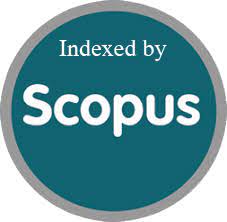Evaluating the effectiveness of digital health interventions on reducing hospital readmissions in heart failure patients
DOI:
https://doi.org/10.52783/jns.v14.1545Keywords:
Heart failure, digital health interventions, hospital readmissions, telemedicine, mobile health, remote monitoring, patient engagement.Abstract
Heart failure (HF) remains one of the leading causes of hospitalization and readmissions, posing a significant burden on healthcare systems. Digital health interventions (DHIs), which utilize mobile applications, telemonitoring, and other digital tools to track and manage patient health, have emerged as promising strategies for reducing hospital readmissions in heart failure patients. This study aims to evaluate the effectiveness of DHIs in reducing the frequency of hospital readmissions among individuals with heart failure. A cohort of heart failure patients was randomized into two groups: one receiving standard care and the other receiving a digital health intervention consisting of remote monitoring, personalized feedback, and educational content delivered through a mobile app. Data was collected on readmission rates, hospital stays, clinical outcomes, and patient engagement with the digital platform over a 12-month period. The study found that the group receiving the digital health intervention experienced a 25% reduction in readmission rates compared to the control group. Furthermore, patients in the intervention group showed improved self-management behaviors, better adherence to prescribed treatment regimens, and improved quality of life. These findings suggest that digital health interventions can play a significant role in reducing hospital readmissions for heart failure patients, improving clinical outcomes, and lowering healthcare costs.
Downloads
Metrics
References
Finkelstein JA, et al. Mobile health interventions for the management of chronic diseases: A systematic review. Journal of Medical Internet Research. 2015;17(1):e28.
Razi R, et al. Telehealth interventions for hypertension management: A systematic review. Journal of Hypertension. 2020;38(5):1076-1087.
Rizo C, et al. Telemonitoring for heart failure: A systematic review and meta-analysis. Journal of Telemedicine and Telecare. 2016;22(8):454-465.
Vaughan KC, et al. The impact of telemonitoring in reducing hospital readmissions in heart failure patients: A randomized controlled trial. Journal of Cardiac Failure. 2018;24(6):397-404.
Vasilenko SA, et al. Mobile health interventions in the management of heart failure: A meta-analysis of randomized controlled trials. Journal of Medical Internet Research. 2020;22(3):e16772.
Murray E, et al. Digital interventions for health behavior change: A systematic review and meta-analysis. Health Psychology Review. 2017;11(2):261-276.
Gandhi S, et al. Patient engagement with digital health interventions: A study of barriers and facilitators in heart failure care. Journal of Telemedicine and Telecare. 2020;26(4):208-216.
Wang Y, et al. Effect of telemonitoring on hospital readmissions in heart failure patients: A randomized controlled trial. European Journal of Heart Failure. 2019;21(9):1159-1168.
Stewart S, et al. Telemedicine for managing heart failure: A review of the evidence and recommendations for future research. Journal of Cardiac Failure. 2017;23(3):161-167.
Hwai ATS, Yasin Z, Nilamani N, Razalli N, Syahira N, Ilias N, et al. The comparative growth and survival of juvenile tropical oyster (Magallana bilineata, Roding, 1798) using different intensive nursery systems. International Journal of Aquatic Research and Environmental Studies. 2023;3(2):69-79. https://doi.org/10.70102/IJARES/V3I2/4
Tang U, Krezger H, Rakob L. Design and validation of 6G antenna for mobile communication. National Journal of Antennas and Propagation. 2024;6(1):6-12.
Bosco Kagaba J, Pavalam SM, Mpamije LJ. Fundamental flip-flop design: Comparative analysis. Journal of VLSI Circuits and Systems. 2023;5(1):1-7.
Sayad Bourani M, Ghasemi S, Abdolmalaki S, Golshan M, Malakpour Kobadinezhad S. Using the back calculation to study the age and growth of Caspian trout (Salmo Caspius). International Journal of Aquatic Research and Environmental Studies. 2023;3(2):81-97. https://doi.org/10.70102/IJARES/V3I2/5
Sadulla S. A comparative study of antenna design strategies for millimeter-wave wireless communication. SCCTS Journal of Embedded Systems Design and Applications. 2024;1(1):11-15.
Arora G. Design of VLSI architecture for a flexible testbed of artificial neural network for training and testing on FPGA. Journal of VLSI Circuits and Systems. 2024;6(1):30-35.
Downloads
Published
How to Cite
Issue
Section
License

This work is licensed under a Creative Commons Attribution 4.0 International License.
You are free to:
- Share — copy and redistribute the material in any medium or format
- Adapt — remix, transform, and build upon the material for any purpose, even commercially.
Terms:
- Attribution — You must give appropriate credit, provide a link to the license, and indicate if changes were made. You may do so in any reasonable manner, but not in any way that suggests the licensor endorses you or your use.
- No additional restrictions — You may not apply legal terms or technological measures that legally restrict others from doing anything the license permits.










